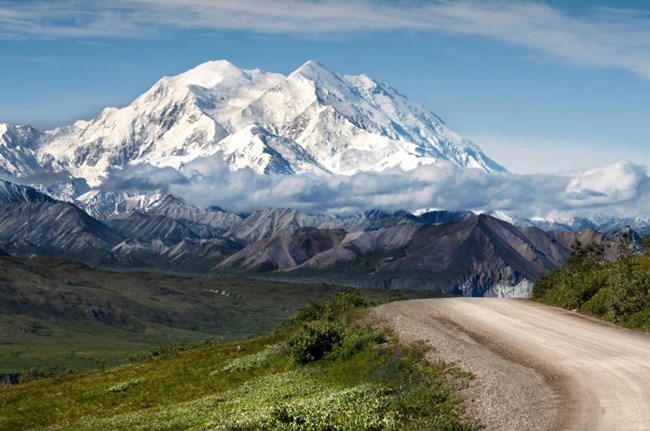
NPS Photo
Although some titles are self-explanatory, others have been used in many different ways. For example, the title “national monument” has been given to natural reservations, historic military fortifications, prehistoric ruins, fossil sites, and to the Statue of Liberty.
In recent years, both Congress and the National Park Service have attempted to simplify the classification and to establish basic criteria for use of the different official titles.
Areas added to the National Park System for their natural values are expanses or features of land or water of great scenic and scientific quality and are usually called national parks, monuments, preserves, seashores, lakeshores, or riverways. Such areas contain one or more unique feature like forest, grassland, tundra, desert, estuary, or river systems; they may contain windows on the past for a view of geological history; they may contain striking landforms like mountains, mesas, thermal areas, and caverns; and they may be habitats of abundant or rare wildlife and plantlife.
Most times a national park contains a variety of resources and includes large land or water areas to help provide sufficient protection of the resources contained within the park. Generally, sport and subsistence fishing are allowed in parks.
A national monument is intended to preserve at least one nationally significant resource. It is usually smaller than a national park and lacks a park’s mixture of attractions.
In 1974, Big Cypress and Big Thicket were authorized as the first national preserves. This category is established primarily for the protection of certain resources. The difference from a park is that in a preserve activities like hunting and fishing may be permitted if they do not jeopardize the natural values and resources.
National rivers and wild and scenic riverways preserve ribbons of land bordering free-flowing streams which have not been dammed, channelized, or otherwise altered. Besides preserving rivers in their natural state, these areas provide opportunities for outdoor activities like hiking, canoeing, and hunting.
Alaska is filled with beautifully interconnected park systems of protected areas for everyone to enjoy.
Last updated: February 16, 2017
